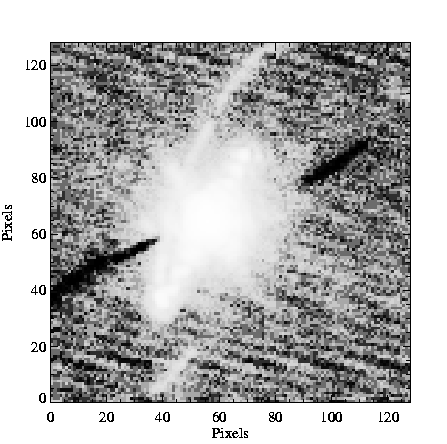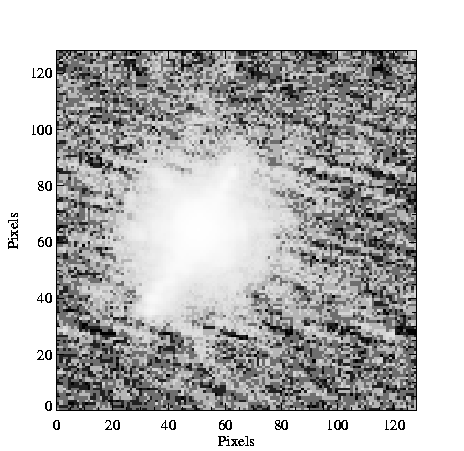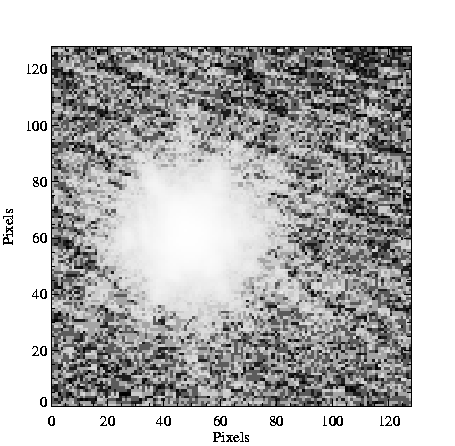
News Update for 5 May 1999


|
News Update for 5 May 1999 |

|
Analysis of some early LWS engineering data revealed that the noddelay system was not functioning properly, causing some degree of image blur indicating that the exposure had started while the telescope was still moving. We confirmed the problem by analyzing the timing of the acquire program and comparing to the resulting images. The source of the problem was found in a section of low-level DSP (digital signal processor) instructions called the pass-thru code. This code helps coordinate the timing of the coadders, hardware that digitizes the analog pixel data and combines the data for each saved frame. The pass-thru code was not properly halting the coadders during the noddelay period.
Roger Anderson, a consultant to Keck Observatory and the SSL Berkeley on the LWIRC program, and Ed Wishnow, LWIRC project scientist, agreed to investigate the problem since LWIRC, a "sister" instrument to LWS, suffered from the same bug. The team used the existing LWIRC system in Berkeley to analyze the noddelay system. In April 1999, lab tests of modified pass-thru DSP code in Berkeley appeared to indicate that the system was fixed and ready for on-sky testing with LWS.
 |
 |
 |
| Noddelay=0 sec | Noddelay=1 sec | Noddelay=3 sec |
On 5 May 1999, the modified code was installed on the LWS system and tested on-sky during an LWS engineering night. The code was evaluated under several different instrument configurations. One test was to simply observe a bright point source star and vary noddelay. Some of the resulting images from this test are included above. The noddelay=0 sec case clearly shows the effects of the telescope motion in the image. The noddelay=1 sec case has only a little telescope motion visible and the noddelay=3 sec seems to have none. Unfortunately the noddelay=2 sec case was not performed. These images demonstrate the the noddelay keyword functions as expected and that the telescope nod time overhead (at least for this individual case) was less than three seconds. Note that the time required to complete a telescope nod operation may depend on other parameters, including elevation and amplitude of the move, so it should not be concluded that 3 seconds will always be sufficient. However, the results of the this test confirm that the LWS noddelay system is now operating as expected.